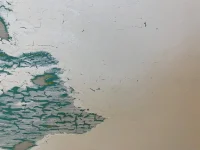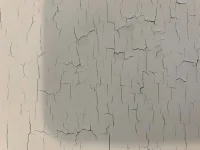You have reached the maximum number of views available on this site without registering.
You are using an out of date browser. It may not display this or other websites correctly.
You should upgrade or use an alternative browser.
You should upgrade or use an alternative browser.
Cracked paint
- Thread starter GARYF123
- Start date
smoother09
Well-Known Member
You have reached the maximum number of views available on this site without registering.
D
Deleted member 32554
Guest
You have reached the maximum number of views available on this site without registering.
essexandy
The Lake Governor
You have reached the maximum number of views available on this site without registering.
D
Deleted member 32554
Guest
You have reached the maximum number of views available on this site without registering.
D
Deleted member 32554
Guest
You have reached the maximum number of views available on this site without registering.
essexandy
The Lake Governor
You have reached the maximum number of views available on this site without registering.
Wayners
Well-Known Member
You have reached the maximum number of views available on this site without registering.
You have reached the maximum number of views available on this site without registering.
D
Deleted member 32554
Guest
You have reached the maximum number of views available on this site without registering.
essexandy
The Lake Governor
You have reached the maximum number of views available on this site without registering.
The Hobo
Well-Known Member
You have reached the maximum number of views available on this site without registering.
MakeItSmooth
Well-Known Member
You have reached the maximum number of views available on this site without registering.
MakeItSmooth
Well-Known Member
You have reached the maximum number of views available on this site without registering.
MakeItSmooth
Well-Known Member
You have reached the maximum number of views available on this site without registering.
Last edited:
The Hobo
Well-Known Member
You have reached the maximum number of views available on this site without registering.
essexandy
The Lake Governor
You have reached the maximum number of views available on this site without registering.
MakeItSmooth
Well-Known Member
You have reached the maximum number of views available on this site without registering.
Stewie03
Well-Known Member
You have reached the maximum number of views available on this site without registering.
essexandy
The Lake Governor
You have reached the maximum number of views available on this site without registering.
paulf
Well-Known Member
You have reached the maximum number of views available on this site without registering.
You have reached the maximum number of views available on this site without registering.
MakeItSmooth
Well-Known Member
You have reached the maximum number of views available on this site without registering.
You have reached the maximum number of views available on this site without registering.
ChrispyUK
Well-Known Member
You have reached the maximum number of views available on this site without registering.
Similar threads
- Replies
- 2
- Views
- 287
- Replies
- 3
- Views
- 618
- Replies
- 12
- Views
- 557
- Replies
- 6
- Views
- 1K
- Replies
- 2
- Views
- 804



